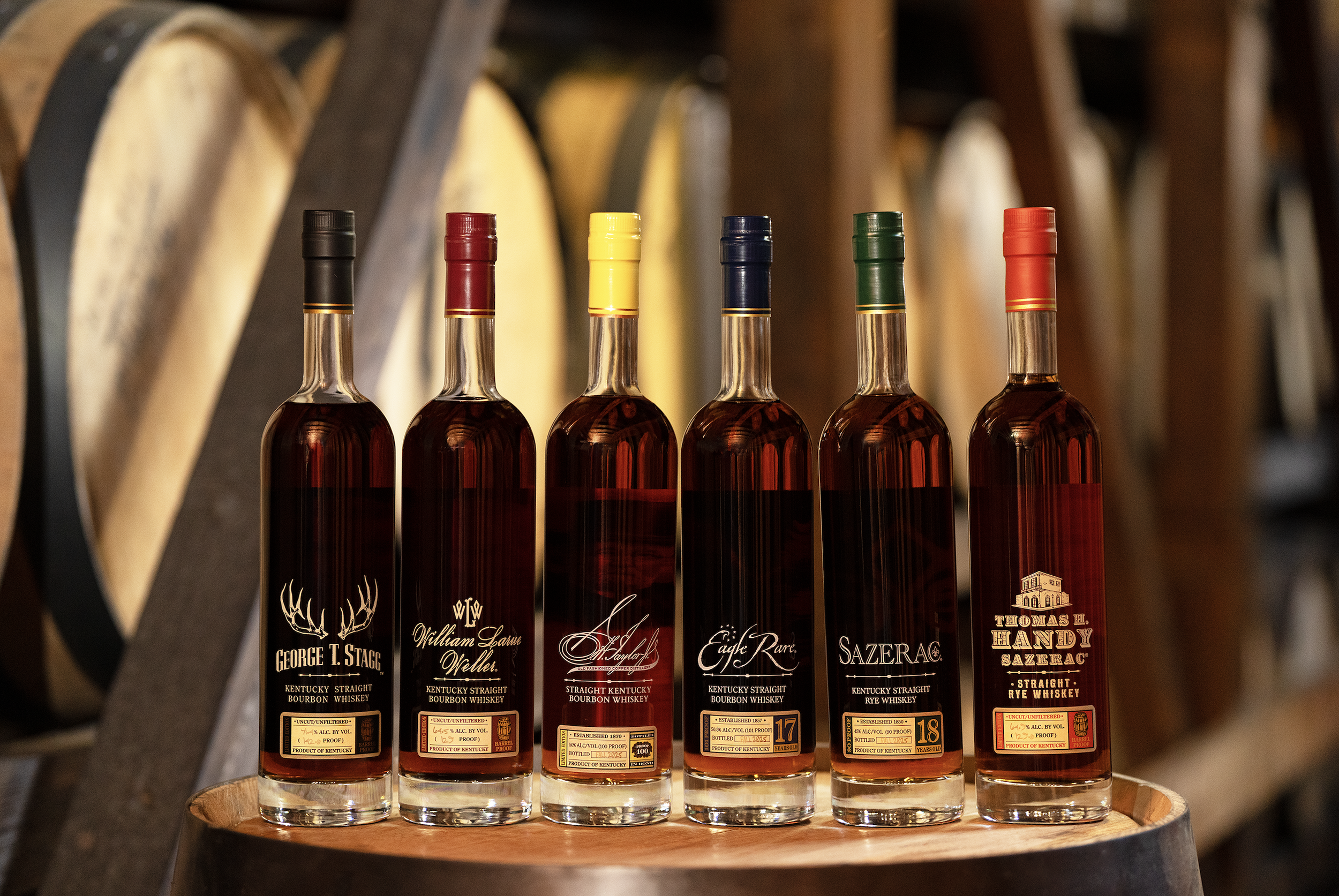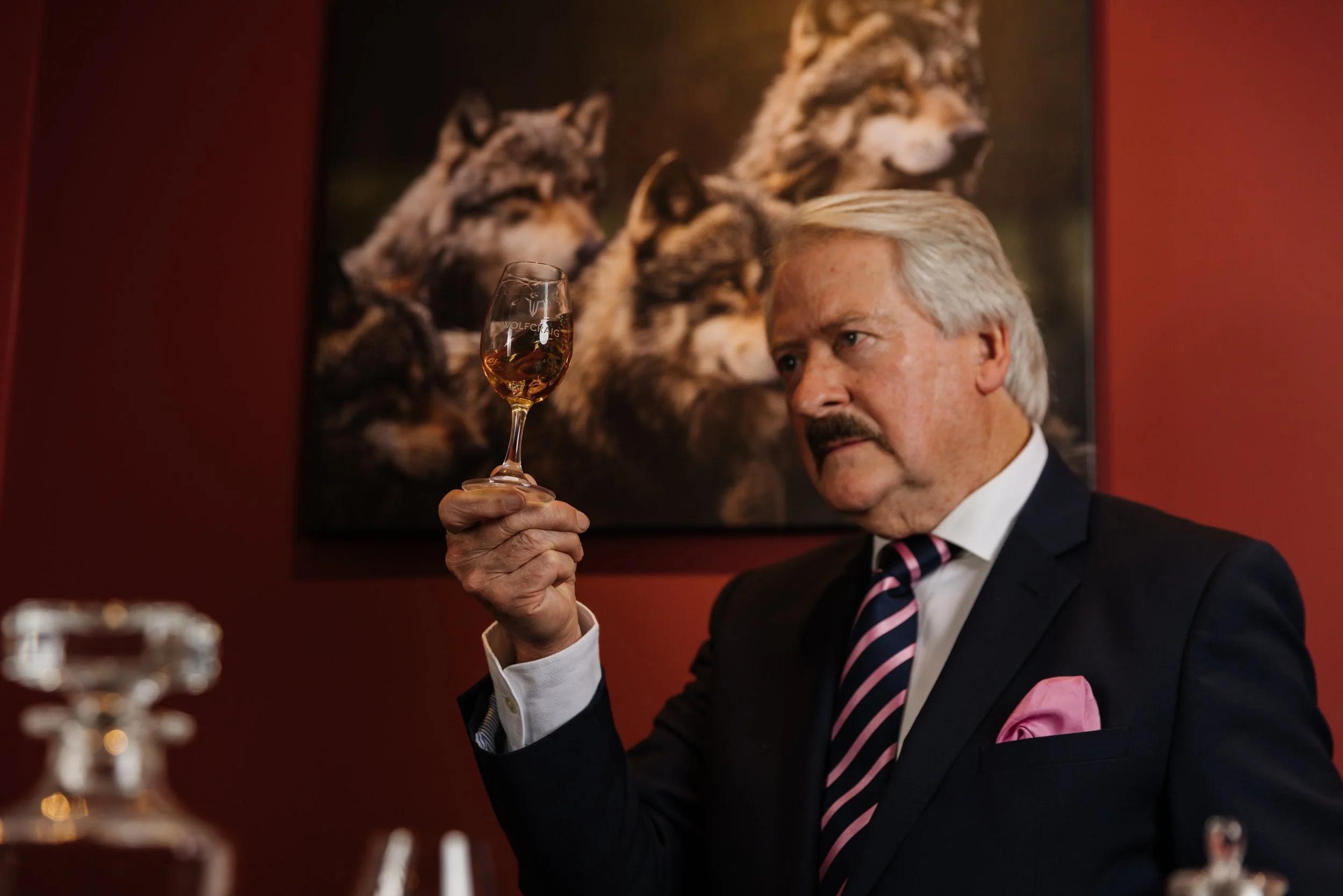Scotch is striding to disaster
A classic Johnnie Walker ad from 1948
Having been copied and plagiarised for so long, Scotch seems to be having some kind of identity crisis, and is in danger of losing the thing that made it special in the first place, argues Nick Morgan, in a forceful and personal polemic
The first rock and roll band I saw were the Kinks, performing live for a recording of Thank Your Lucky Stars in the ABC TV Studio (in previous lives the Theatre Royal and the Astoria Cinema) in Aston, Birmingham. It was, I think, 1966. The world was still black and white. But emerging blinking from the monochrome gloom and uniformity of post-war Britain bands like the Kinks cut a distinct and defiant figure. ‘I'm Not Like Everybody Else’ sang Ray Davies angrily. Being different, standing out from the crowd, was a way of getting yourself noticed. Alexander Walker knew that when he put ‘an oblique or slanting’ label on a square bottle. James Stevenson knew that when with American ad-man Paul E Derrick and illustrator Tom Browne he created the Johnnie Walker figure, the striding man who walked around the world, one of the most distinctive and enduring of all advertising characters.
‘Scotch’s almost complete Scotchness guaranteed it would not be like everybody else. Everybody else wanted to be like Scotch’
These early whisky marketeers, the Walkers, the Dewars, James Buchanan and Peter Mackie, were creating distinct identities for their brands, and also together with distillers gradually shaping a distinct identity for Scotch whisky that would eventually be enshrined both in traditional practice and legal statute, and policed around the world by the Scotch Whisky Association. Scotch has its own signs and semiotics, and a discrete language and lexicon, which transcend the tartan and bagpipes which it is so often (and mostly erroneously) accused of cloaking itself in. Scotch’s almost complete Scotchness guaranteed it would not be like everybody else. Everybody else wanted to be like Scotch.
And so it was that from the early attempts of Suntory to produce ‘Scotch Whisky’ in the late 1920s to the explosion of new distilleries around the world in the early twenty-first century, everybody (or almost everybody) wanted to be like Scotch, and more particularly like single-malt Scotch whisky, pot-still, handcrafted, artisanal, a taste of place, a premium price. And as many of the locations chosen by these new-age distillers matched those long-used by their Scottish counterparts for remoteness and natural beauty it was easy to think that little bits of Scotland were springing up around the world, dedicated to the production of the old country’s golden spirit.
‘Distillers in other geographies began to realise that the real lesson to be learned from Scotch lay in the fact of its distinctiveness’
Or so it might have seemed to some. However it was not too long before distillers in other geographies began to realise that the real lesson to be learned from Scotch lay in the fact of its distinctiveness. Being like Scotch was not being distinctive. So malt whisky makers in Australia, in New Zealand, in North America and elsewhere are now trying to understand and define and protect in law what it is that makes their whiskies distinctive. What it is that makes their whiskies different, and not like everybody else.
‘It’s desperately clutching at straws from other world whisky makers and other spirits categories, in order to keep itself relevant’
But here’s a strange thing. At the same time that ‘new’ whisky-making geographies are trying to shape distinct identities for themselves, Scotch almost seems to be trying to shed its own. Having been copied and plagiarised for so long it’s as if the Scotch category is having some sort of identity crisis, as a result of which it’s desperately clutching at straws from other world whisky makers and other spirits categories, in order to keep itself relevant.
Scotch producers are doing a lot of ‘reimagining’, and some are shape-shifting from one culturally appropriated identity to another with a bewildering rapidity. Among the more egregious examples are a recent ‘Grande Couronne’ cognac finished single malt, with hideous baroque-derived packaging and tasting notes that sing of a French patisserie rather than Speyside. It is, we are told, ‘the epitome of opulence, its very name, meaning crown in French, is the promise of the excellence in each drop of this precious single malt.’ Also, from the same producer, who have sometimes styled themselves as the guardians of the integrity of Scotch, a ‘Grand Yozakura’ whisky finished in ex-Awamori casks’ with packaging showered with cherry blossom. The whole is ‘housed in an elegant whisky box with sakura imagery, and a hanko stamp engraved bespoke stopper, a cloth capsule with a poem that are included for a complete gifting experience.’ You can barely see the stag’s head from the trees.
‘Thirty years ago Scotch single malt whisky used to be all about the distillery, the distillation process. Now these are mere ciphers. It’s all about the wood’
At the heart of this category-diminishing malaise is the curse of cask finishing. Once an interesting (if not particularly original) way of enhancing the traditional flavours of Scotch, it has now become a commercially driven practice to help producers bring young and immature, or indifferent and indistinct, whiskies to market at enhanced prices – part of the very evident ‘greedflation’ process that whisky consumers are having to endure. It’s not innovation – innovation takes time in Scotch and owners, investors and managers have no patience – but it's cheap and quick. Thirty years ago Scotch single malt whisky used to be all about the distillery, the distillation process. Now these are mere ciphers. It’s all about the wood. And if you are using someone else’s wood, then it’s all about their story, not Scotch’s.
‘Someone recently wrote that ‘Scotch can be almost anything’. Well, the fact of the matter is it can’t – or rather it shouldn’t’
Of course so called ‘influencers’ and ‘commentators’, seduced as they are by the nature of their corruptive relationships with producers both large and small, simply welcome each new release and ‘innovation’ with the glee of infants around a Christmas tree, clapping their hands with delight at every sparkling new gift. The world of Scotch whisky is draped in the emperor’s new clothes, but no one seems to be brave enough to be the little child to call it.
Someone recently wrote enthusiastically that ‘Scotch can be almost anything’. Well, the fact of the matter is it can’t – or rather it shouldn’t. Becoming ‘almost anything’ is like throwing the baby out with the bathwater. Becoming ‘almost anything’ really means becoming everything. It means being just like everybody else. That’s not how Scotch got famous – but it might be what kills it.
Nick Morgan is a writer, commentator and former Marketing Director of Diageo. His official history of Johnnie Walker, A Long Stride, the History of the World's No 1 Scotch Whisky was published in 2020.







